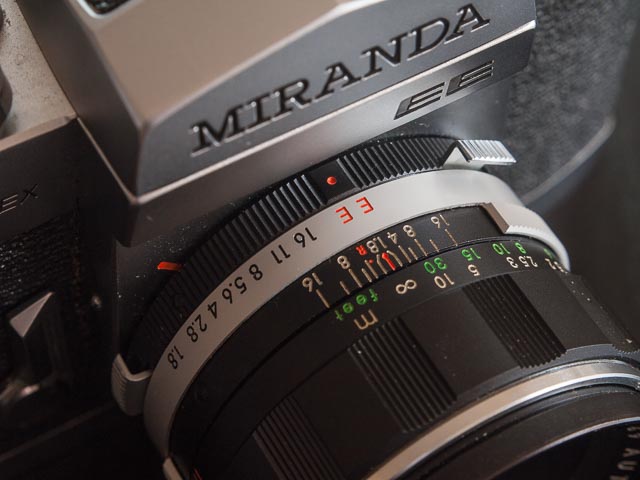Miranda Auto Sensorex EE


Throughout much of the 1950s, 60s and 70s Miranda built a successful niche as a maker of innovative and sophisticated 35mm SLRs of distinctive design. The first Miranda was the Miranda T of 1954 and the last all-new Miranda design was the DX-3 was launched in 1975. (The REII was launched in 1976, but that was just a mild update of the RE from 1971). Miranda stopped making cameras at the end of 1976 (though there were still Mirandas in the supply chain as late as 1978). Miranda just didn’t have the resources to successfully translate their expertise in mechanical SLR design to the increasingly common electronic designs used by their competitors.
In the 1980s the Miranda name reappeared, but this time it was just a brand name applied to a variety of very ordinary cameras and lenses made by Cosina and sold in the UK by Dixons.

The camera you see here is the Miranda Auto Sensorex EE. It was launched in 1971 and was one of the most sophisticated cameras Miranda ever produced. It features shutter speed priority automatic exposure with full manual override. The viewfinder has a needle which points to the aperture the camera will select (or the aperture you should transfer to the lens if in manual mode). A new series of Auto Miranda ‘E’ lenses were introduced with the Auto Sensorex EE which featured the ‘EE’ position on the lens’ aperture ring. When you set the lens to EE the camera is ready for automatic exposure.

Miranda cameras were generally aimed at the advanced amateur market and so had several highly advanced features. Many Miranda cameras, including the Auto Sensorex EE, had interchangeable viewfinders. And the Auto Sensorex EE even features a choice of average and spot metering patterns. These advanced features place Miranda as a competitor to the advanced models from Nikon and Canon, though no Miranda model ever featured the ability to add a motor drive, which effectively excluded Miranda from the professional market.
Most Miranda cameras feature Miranda’s own proprietary bayonet mount, though the earliest Miranda cameras featured an unusual 44mm screw mount and Miranda also made a small selection of models with the M42 screw mount. The Miranda bayonet mount was unusual in that it featured a reverse 4 claw bayonet, with the male part of the bayonet on the camera and the female part on the lens. This bayonet is combined with a 44mm screw mount allowing the first Miranda screw mount lenses to be used without an adapter. Unfortunately Miranda produced a fairly limited range of lenses and theses days they are quite hard to find.
As soon as you pick up this camera two things are immediately apparent: first this is a big heavy camera at 950 grams including the f/1.8 standard lens, and the second is that this is obviously a very well built camera. The chrome plating is very smooth and the chrome dials are beautiful.

